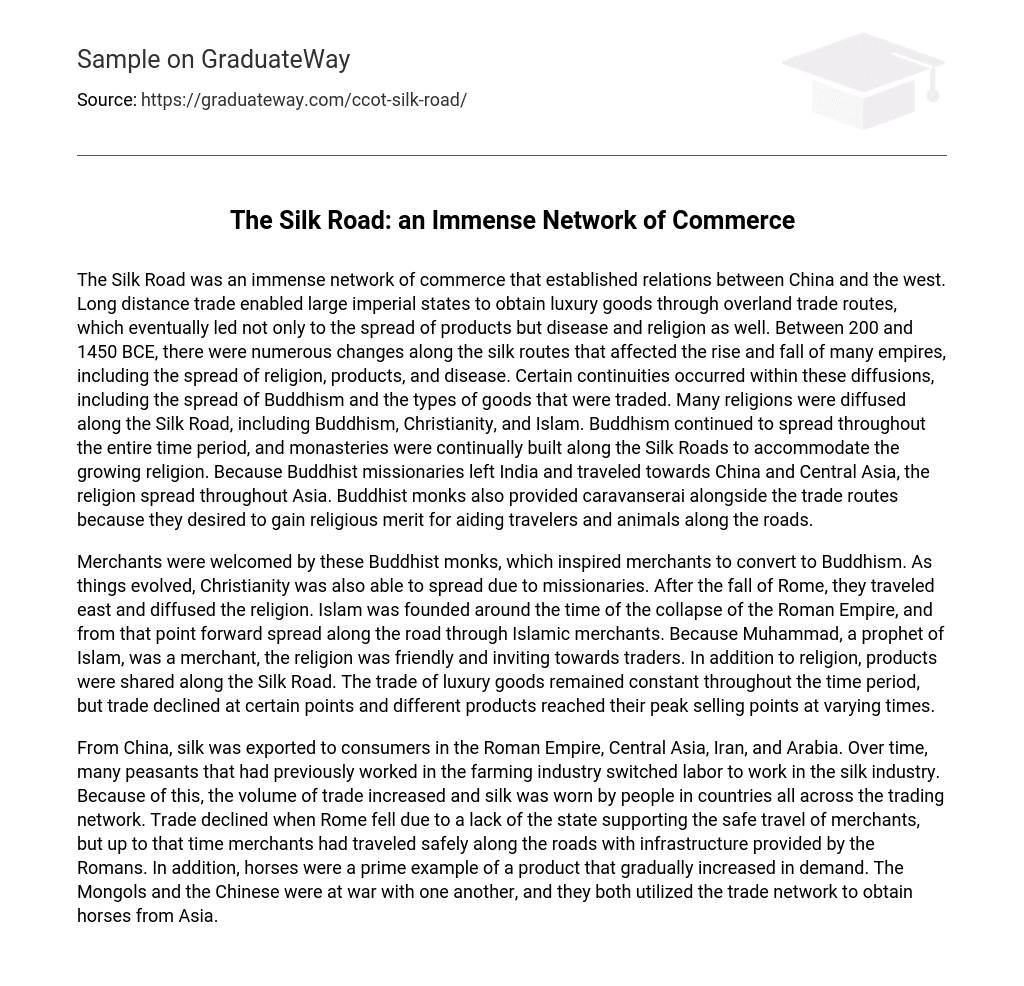The Silk Road was an immense network of commerce that established relations between China and the west. Long distance trade enabled large imperial states to obtain luxury goods through overland trade routes, which eventually led not only to the spread of products but disease and religion as well. Between 200 and 1450 BCE, there were numerous changes along the silk routes that affected the rise and fall of many empires, including the spread of religion, products, and disease. Certain continuities occurred within these diffusions, including the spread of Buddhism and the types of goods that were traded. Many religions were diffused along the Silk Road, including Buddhism, Christianity, and Islam. Buddhism continued to spread throughout the entire time period, and monasteries were continually built along the Silk Roads to accommodate the growing religion. Because Buddhist missionaries left India and traveled towards China and Central Asia, the religion spread throughout Asia. Buddhist monks also provided caravanserai alongside the trade routes because they desired to gain religious merit for aiding travelers and animals along the roads.
Merchants were welcomed by these Buddhist monks, which inspired merchants to convert to Buddhism. As things evolved, Christianity was also able to spread due to missionaries. After the fall of Rome, they traveled east and diffused the religion. Islam was founded around the time of the collapse of the Roman Empire, and from that point forward spread along the road through Islamic merchants. Because Muhammad, a prophet of Islam, was a merchant, the religion was friendly and inviting towards traders. In addition to religion, products were shared along the Silk Road. The trade of luxury goods remained constant throughout the time period, but trade declined at certain points and different products reached their peak selling points at varying times.
From China, silk was exported to consumers in the Roman Empire, Central Asia, Iran, and Arabia. Over time, many peasants that had previously worked in the farming industry switched labor to work in the silk industry. Because of this, the volume of trade increased and silk was worn by people in countries all across the trading network. Trade declined when Rome fell due to a lack of the state supporting the safe travel of merchants, but up to that time merchants had traveled safely along the roads with infrastructure provided by the Romans. In addition, horses were a prime example of a product that gradually increased in demand. The Mongols and the Chinese were at war with one another, and they both utilized the trade network to obtain horses from Asia.





